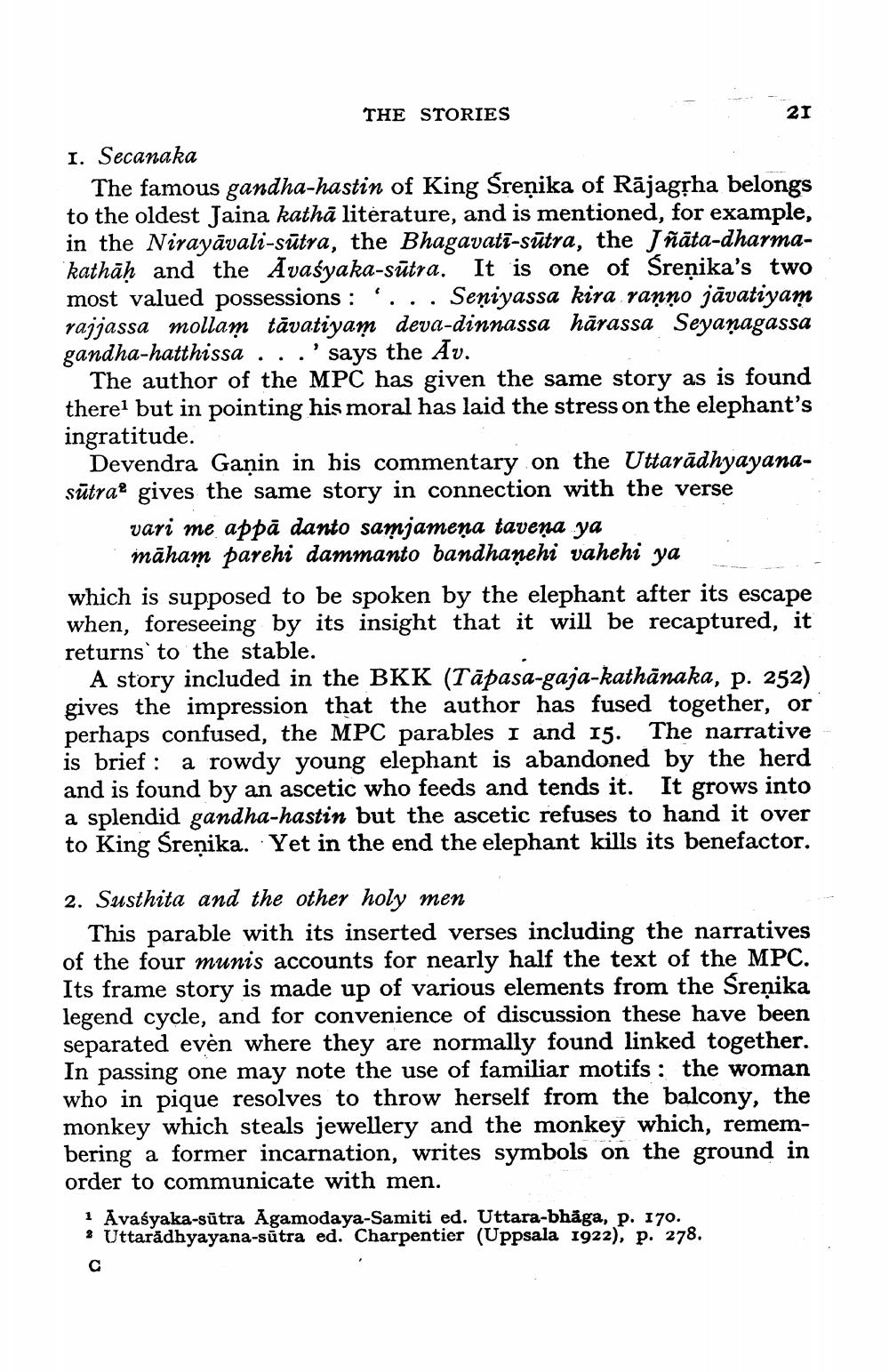________________
THE STORIES
21
1. Secanaka
The famous gandha-hastin of King Śreņika of Rājagļha belongs to the oldest Jaina kathā literature, and is mentioned, for example, in the Nirayāvali-sūtra, the Bhagavatī-sūtra, the Jñāta-dharmakathāḥ and the Avaśyaka-sūtra. It is one of Śreņika's two most valued possessions : '... Seniyassa kira ranno jāvatiyam rajjassa mollam tāvatiyam deva-dinnassa hārassa Seyaņagassa gandha-hatthissa ...' says the Av.
The author of the MPC has given the same story as is found there but in pointing his moral has laid the stress on the elephant's ingratitude.
Devendra Ganin in his commentary on the Uttarādhyayanasūtrao gives the same story in connection with the verse
vari me appă danto samjamena tavena ya
māham parehi dammanto bandhanehi vahehi ya which is supposed to be spoken by the elephant after its escape when, foreseeing by its insight that it will be recaptured, it returns to the stable.
A story included in the BKK (Tāpasa-gaja-kathānaka, p. 252) gives the impression that the author has fused together, or perhaps confused, the MPC parables 1 and 15. The narrative is brief : a rowdy young elephant is abandoned by the herd and is found by an ascetic who feeds and tends it. It grows into a splendid gandha-hastin but the ascetic refuses to hand it over to King Sreņika. Yet in the end the elephant kills its benefactor.
2. Susthita and the other holy men
This parable with its inserted verses including the narratives of the four munis accounts for nearly half the text of the MPC. Its frame story is made up of various elements from the Sreņika legend cycle, and for convenience of discussion these have been separated even where they are normally found linked together. In passing one may note the use of familiar motifs : the woman who in pique resolves to throw herself from the balcony, the monkey which steals jewellery and the monkey which, remembering a former incarnation, writes symbols on the ground in order to communicate with men.
1 Avaśyaka-sūtra Agamodaya-Samiti ed. Uttara-bhäga, p. 170. * Uttaradhyayana-sutra ed. Charpentier (Uppsala 1922), p. 278.




